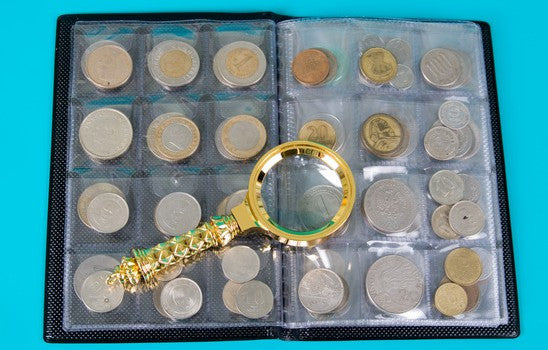
Article Detail
16 Mar
When it comes to strange human behaviours, there are few so interesting as the art of collecting. It’s something which, when done right, can be intensely rewarding; if it’s done wrong, however, it can be considered a mental disorder. In this article, we’ll examine this phenomenon in greater detail.
Why do we love to collect things?
When you sit back and consider it, this compulsion makes no sense. From an evolutionary standpoint, it’s quite unlike our other instincts, such as our urge to eat something, or the urge to look after our children (and put their welfare above our own). And yet, the glee with which we collect these items is often felt at a visceral, primal level.
One theory holds that the habit begins in early childhood. We’re encouraged to develop bonds with inanimate objects, like teddy bears and favoured blankets. From this beginning we develop a sense of property – and that ownership of something can be emotionally rewarding. Children will often develop collections of found objects, like pennies and shells. This is something that’s widely recognised by purveyors of children’s toys. Just consider the enormously successful Pokémon franchise, which sees participants collecting fictional animals. It’s no coincidence that its slogan is ‘gotta catch ‘em all!’
Eventually, it’s no longer the things that we own that provide comfort, but the act of collecting them. Of course, as we get older, there are other motivators at work: some collections are built on the basis that their value will increase over time – particularly if paired with other, complementary items. For example, a collector of vintage baseball cards might scour the earth for a missing card, parting with enormous fees to do so.
For such enthusiasts, it’s not just the art of adding any old item to enhance the collection for the sake of personal taste – there is only one sort of item that will fill in a missing gap. This might explain why so many successful book series come emblazoned with numbers on the spine, or spell out a message when all assembled on a shelf.
If you’re missing a specific item, then you’ll get quite a different thrill from the attempt to complete your collection. Trying to track down that elusive missing component is taxing, and the rewarding sensation when you finally arrive at success is addictive, for much the same reason that a slot machine or Angry Birds is addictive.
When does collecting become hoarding?
Any behaviour that has the potential to become addictive has the potential to become a behavioural problem. Obviously, there’s a temptation to continue adding to a collection wherever possible – regardless of whether the collection warrants expansion.
Like so many vices, the simple answer is this: when you do it’s collecting; when other people do it it’s hoarding. But we can be a little bit more objective than that. You might start by posing to yourself a few questions:
- What was the last item from your collection that you threw away?
- If you could pick one item in your collection to rid yourself of, what would it be?
- Do people, jokingly or otherwise, refer to you as a hoarder?
If you answered all of these questions by scrunching your face together into a tight ball, then you’re likely suffering from cognitive dissonance: you’re quite sure that you’re not a hoarder, but the evidence says otherwise.
Another way to tell whether you’re a hoarder or a collector is the way that your collection is organised. If it’s laid on in a neat, well-ordered display that doesn’t take up much room, then it’s a collection. If it’s an incomprehensible mass of stuff that takes up and entire room, then it’s probably a hoard.
Of course, the line between these two extremes is not always so clear. If you suspect that you might be a hoarder, then you might set yourself a challenge: simply get rid of a few of your items. There are charity shops that would gladly take them off your hands. You can always replace the items you’ve dispensed with – and that’ll give you a little bit of a reward at the end of it.
Though the symptoms may be obvious, the precise causes which drive hoarding behaviour are a little bit trickier to pinpoint. The NHS have published an exhaustive and hugely helpful article on the subject, which is worth reading if you, or someone you know, is exhibiting hoarding behaviour.
What sorts of things do people collect?
Let’s consider some of the things that people might collect:
Teddy Bears
When they were first introduced, the famous teddy looked a great deal more similar to an actual bear than the things we recognise today. Since then, the eyes have gotten larger, the chin smaller and the nose more squashed – the same features a human baby exhibits. You might recognise similar features in modern breeds of domestic dog and cat, and the drivers behind the change are similar – for biological reasons, we prefer animals to look that way.
Teddy Bears are available in an enormous number of different shapes and sizes – ranging from vintage classics to more contemporary offerings. In the former category, there are offerings from Steiff, the company that helped start the trend. In the latter, there is the work of Charlie Bears.
Coins
Coins have been around for thousands of years. They’ve been used as a medium of exchange by peoples around the country, and as a canvas on which those peoples can venerate their gods, monarchs and ideals. While some coins are scarce through accident of history, others are made incredibly rare by design, in an attempt to deliberately provide collectors with something to collect.
This combination of artistry, portability and rarity has made coin-collecting a serious passion for many.
Comic books
This same combination has made comic books serious business for collectors, too. Since they mostly depict beloved fictional characters, comic books hold perhaps an even greater artistic appeal than coins. Rarer comic books also provide enthusiasts with the opportunity to display their superior knowledge of a given franchise. Comic books are most valuable when kept in their original wrapping, as when taken out they are a great deal more vulnerable to damage. Some comic books are more valuable than others. The first edition of Action Comics, in which Superman made his first appearance, recently sold for a million dollars – and it wasn’t even in mint condition!
 Free delivery on orders over £20
Free delivery on orders over £20






